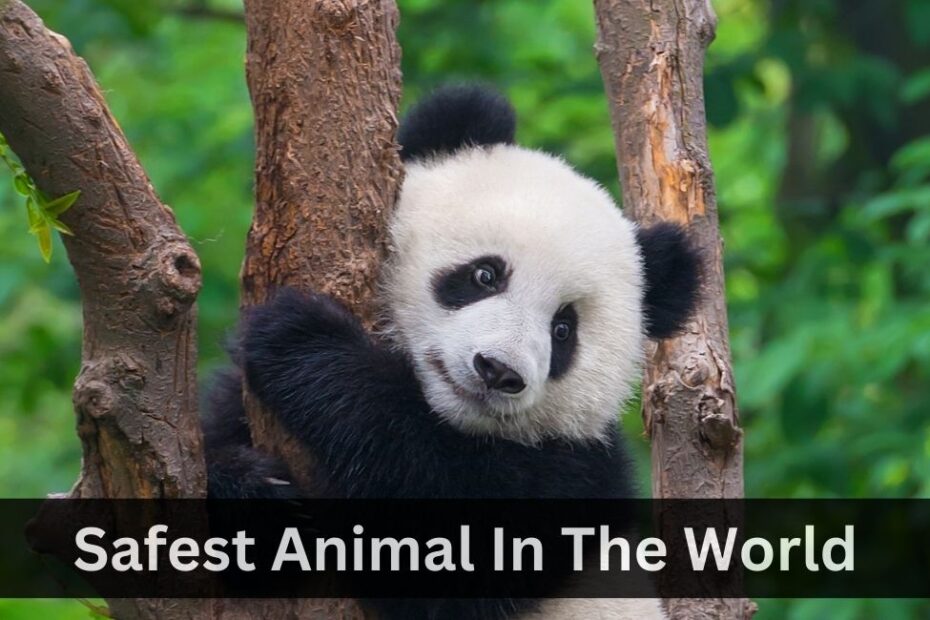In the vast tapestry of the animal kingdom, certain species have evolved unique adaptations that grant them the title of the safest animals in the world. Whether it’s through camouflage, toxins, or cooperative behavior, these creatures have mastered the art of survival. In this article, we’ll explore six remarkable examples of nature’s guardians, highlighting their exceptional strategies for self-preservation.
- Honey Bees: The Ultimate Team Players
Honey bees, often overlooked for their role in pollination, are also remarkable for their cooperative and defensive behaviors. A hive of honey bees is a tightly knit community, and each member plays a crucial role in protecting the colony. When a threat is detected, bees release alarm pheromones to alert their companions. They also engage in coordinated attacks to drive away intruders. The sting of a honey bee is a potent defense mechanism, as the bee sacrifices itself in the process. The intricate social structure and synchronized defense make honey bees one of the safest animals in the world.
- Armadillos: Nature’s Armored Tanks
Armadillos, with their distinctive bony armor, have earned the nickname “nature’s armored tanks.” These small mammals are native to the Americas and are characterized by their hard, protective shells made of osteoderms. When threatened, armadillos can curl into a ball, presenting an impenetrable fortress to potential predators. This unique adaptation not only provides protection but also allows armadillos to wedge themselves into tight spaces, minimizing their exposure to danger. The armor and defensive behavior make armadillos a safe bet in the wild.
- Poison Dart Frogs: A Toxic Elegance
Despite their small size and vibrant colors, poison dart frogs are among the most dangerous creatures in the animal kingdom. Found in Central and South American rainforests, these frogs secrete potent toxins through their skin, a defense mechanism acquired from their diet of certain toxic ants and mites. The vivid colors of poison dart frogs serve as a warning to potential predators, signaling the presence of deadly toxins. The toxicity of these frogs is so potent that indigenous people have used their secretions to poison the tips of blowdarts for hunting. This toxic elegance makes poison dart frogs one of the safest animals, as predators learn to avoid their striking appearance.
- Giant Pandas: Masters of Disguise
Giant pandas, with their distinctive black and white fur, may not seem like masters of disguise, but their unique coloration serves a purpose in their mountainous habitats. The black fur on their ears and around their eyes helps them communicate with fellow pandas through subtle facial expressions. However, their main safety feature is their ability to blend into the snow-covered surroundings, making it challenging for predators to spot them. Despite their large size, giant pandas are elusive and spend much of their time alone, minimizing the risk of encountering potential threats. The combination of their camouflage and solitary habits contributes to the panda’s status as one of the safest animals.
- Boxer Crabs: Anemone-Enhanced Defense
Boxer crabs, also known as pom-pom crabs, have a unique strategy for self-defense: they wield stinging sea anemones as weapons. These small crustaceans form a symbiotic relationship with the anemones, holding one in each claw. When threatened, the boxer crab waves its anemones, deterring predators with the prospect of a painful sting. This cooperative defense mechanism is not only visually striking but also highly effective. The relationship between boxer crabs and sea anemones exemplifies the ingenious ways in which animals adapt and utilize their environment for protection, securing their place among the safest creatures.
- Mantis Shrimp: Nature’s Technicolor Warriors
Mantis shrimp, despite their small size, are equipped with formidable weapons that make them fierce predators and formidable defenders. These marine crustaceans have specialized limbs that can strike with incredible speed and force, delivering powerful blows to break the shells of prey or ward off potential threats. Mantis shrimp are also known for their remarkable vision, with complex eyes capable of perceiving a wide range of colors. Their sophisticated eyesight aids in detecting predators and prey, giving them a strategic advantage in their underwater environment. The combination of powerful strikes and advanced vision makes mantis shrimp one of the safest animals in the ocean.
Conclusion:
Nature has bestowed upon various species an array of defenses that elevate them to the status of the safest animals in the world. From the cooperative efforts of honey bees to the toxic elegance of poison dart frogs, each of these creatures has evolved unique strategies to ensure their survival. As we marvel at the ingenuity of these animals, it becomes clear that the key to safety in the animal kingdom lies in adaptation, cooperation, and sometimes, a touch of toxic elegance. These six examples are a testament to the diversity of life on Earth and the incredible ways in which animals have evolved to navigate the challenges of their environments.
